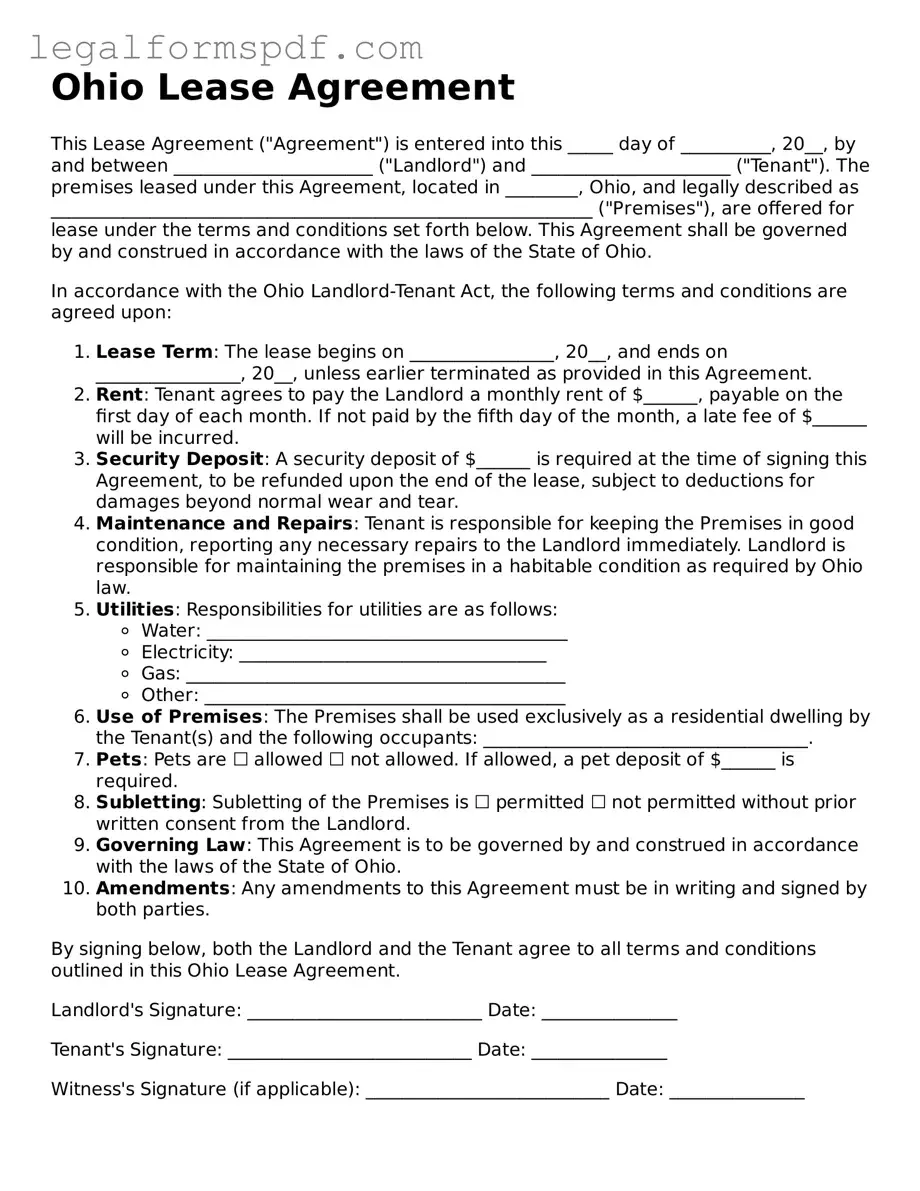What is an Ohio Lease Agreement?
An Ohio Lease Agreement is a legally binding document between a landlord and a tenant that outlines the terms and conditions of renting property in Ohio. It covers aspects such as rent amount, payment schedules, security deposits, and the rights and responsibilities of both parties.
How long can a lease agreement be in Ohio?
In Ohio, lease agreements can be made for different durations, commonly ranging from month-to-month leases to one-year terms. The length of the agreement should be clearly stated in the document. Longer leases may also be negotiated if both parties agree.
Are security deposits required in Ohio?
Ohio law does not require security deposits, but most landlords request one as part of the lease agreement. The amount often equals one month's rent. Ohio law also dictates that landlords must return the deposit within 30 days of tenancy termination, minus any deductions for damages or unpaid rent.
Can a tenant terminate a lease agreement early in Ohio?
Yes, a tenant can terminate a lease agreement early in Ohio under certain conditions, such as military service deployment or through mutual agreement with the landlord. However, unless there's a legal justification, doing so may result in penalties or the forfeiture of the security deposit. It's advisable to review the lease's terms for specific termination clauses.
Are landlords required to maintain the property in Ohio?
Yes, in Ohio, landlords are responsible for maintaining the property in a safe and habitable condition. This includes making necessary repairs, ensuring compliance with health codes, and providing essential services such as heat and water. Tenants who find their rental in disrepair have rights, including withholding rent or "repair and deduct," but these actions should be taken with caution and usually after attempting to notify the landlord.
